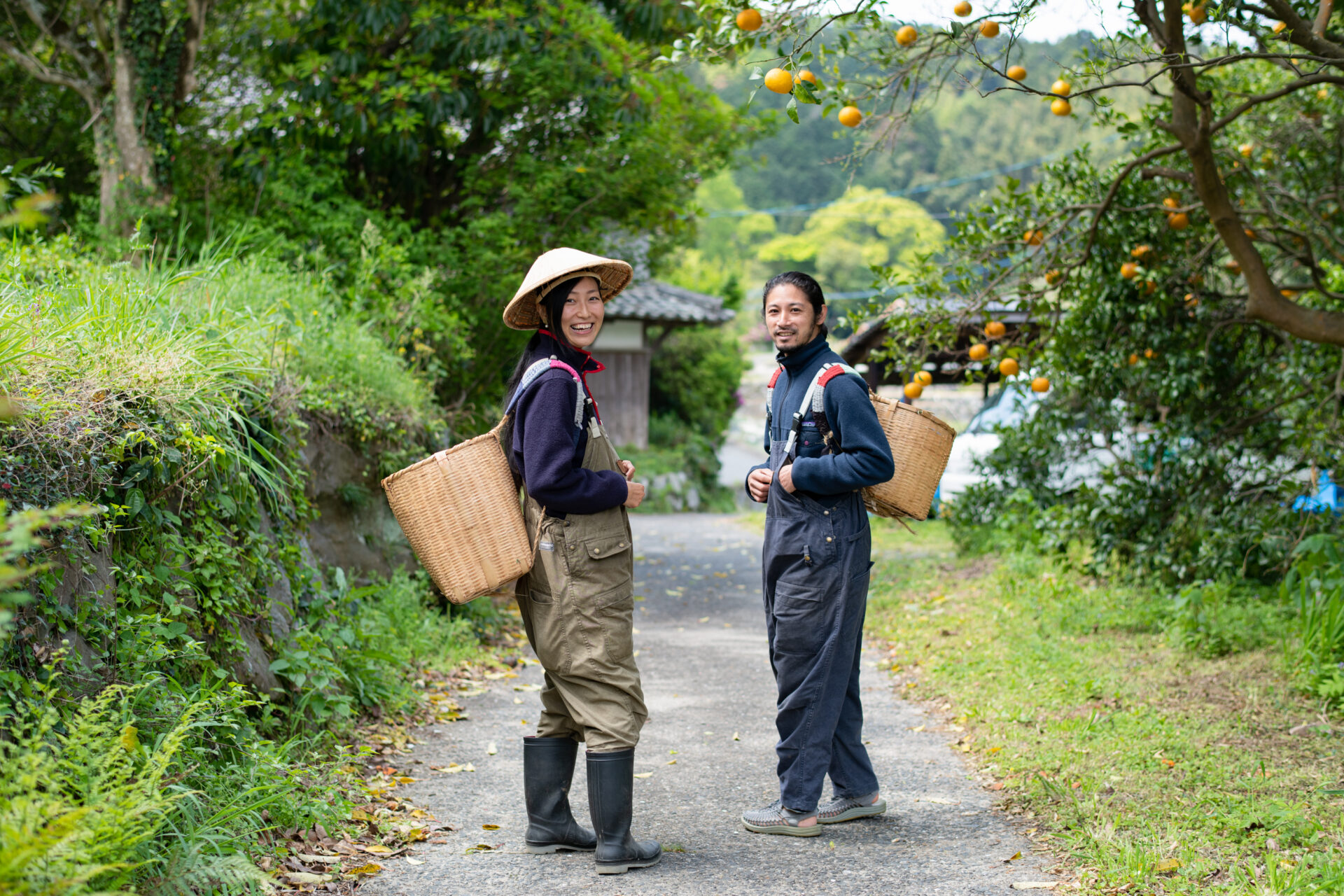The residents of Itoshima Share House, in Itoshima Fukuoka aim to live sustainably by making their own food, money, and energy.
They harvest rice and vegetables in their nearby field, and keep chickens and bees in their backyard. Most of their electricity comes from solar panels, and rather than connecting to water and sewage, they use natural spring water. They make their living by holding workshops on sustainable country living.
What led them to choose this self reliant lifestyle in Itoshima and what does their day to day life look like?
In April 2021, we visited manager Chiharu Hatakeyama and cook Koichi Shida, the couple who run the Itoshima Share House, to find out.
Growing vegetable in the field, picking wild grass for tea
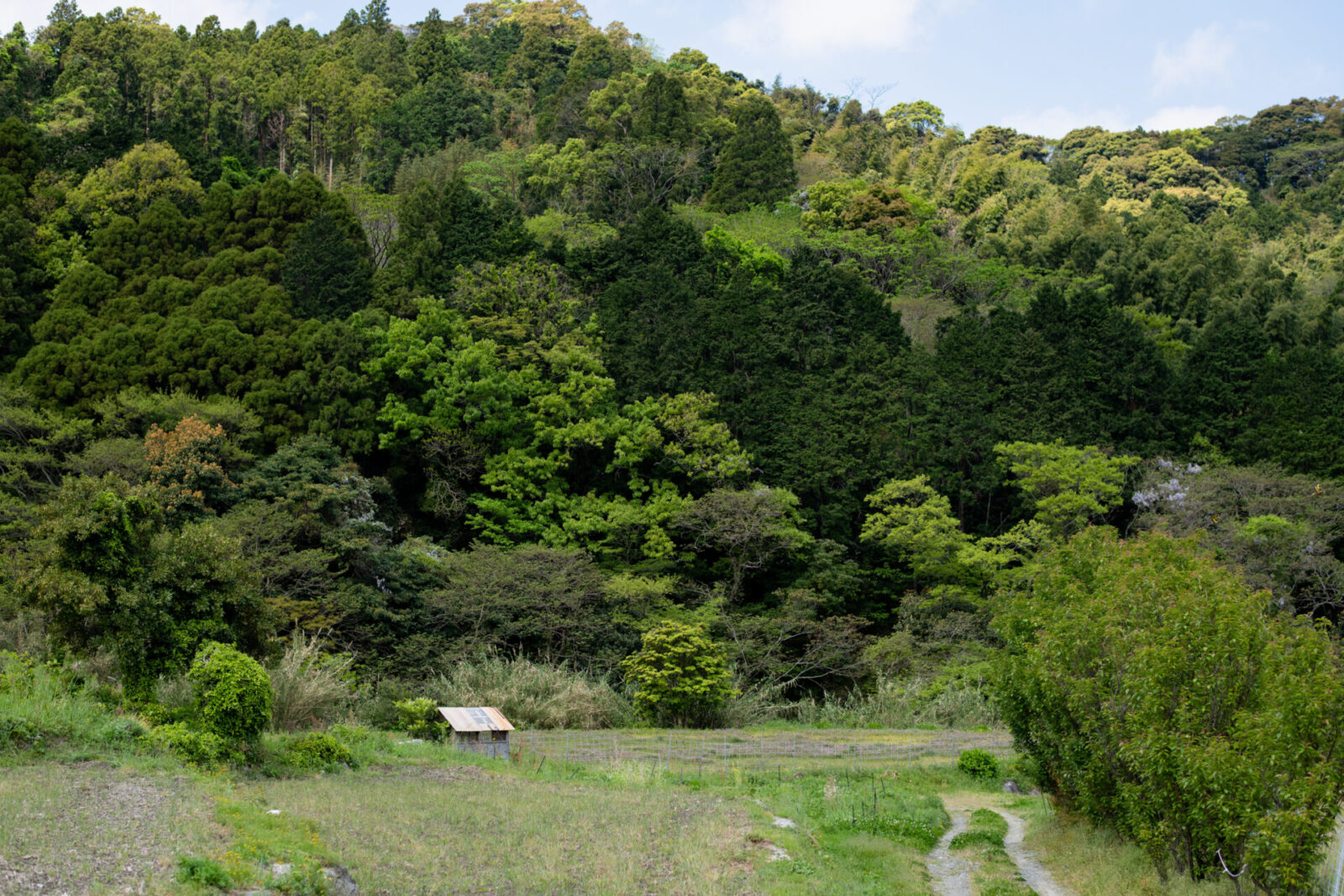
The Itoshima Share House is located in a village called Saba, which is just up the mountains from the seaside of Itoshima.
The region is surrounded by mountains and rivers and is rich in nature. The sky is so clear you can see across the rice fields in the distance. If you listen carefully, you can hear the chirping of the birds and the soft sound of the water flowing in the river.
Their vegetable field is just a short walk from the house so they carried their baskets on their backs and showed us the way.

While walking, they pick different wild plants of the season. Shida advises that “It is important to remember which wild plants are inedible.” They remember where they pick each type of plant so they can come back for more each year.
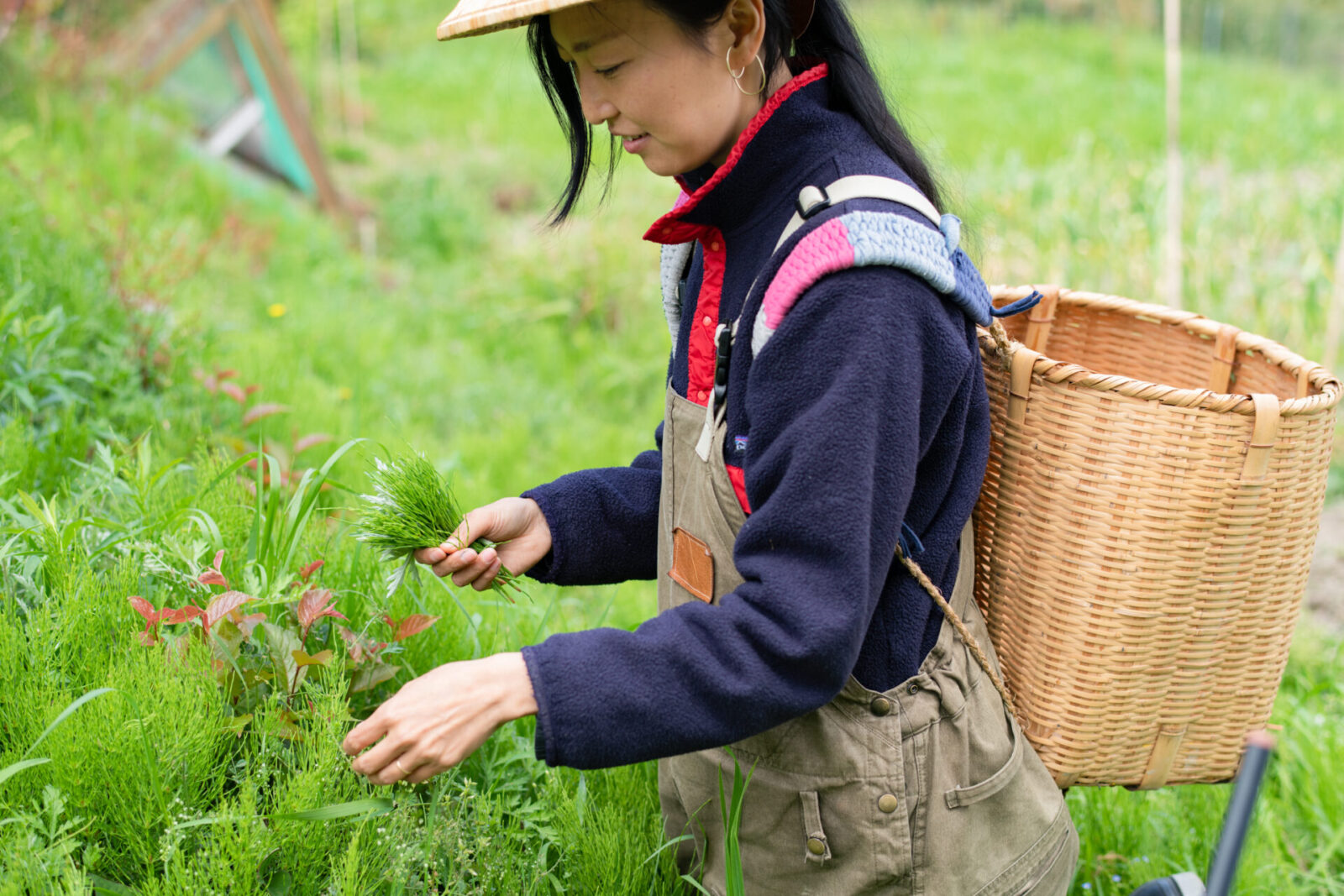
They sun dry the wild plants and use it to make natural homemade herbal teas. The plants they pick include dokudami, mulberry leaves, lemongrass, mugwort, horsetail, Canadian goldenrod, and more. They make different teas to match their moods, and their latest favorite tea plant is mulberry and loquat leaves.
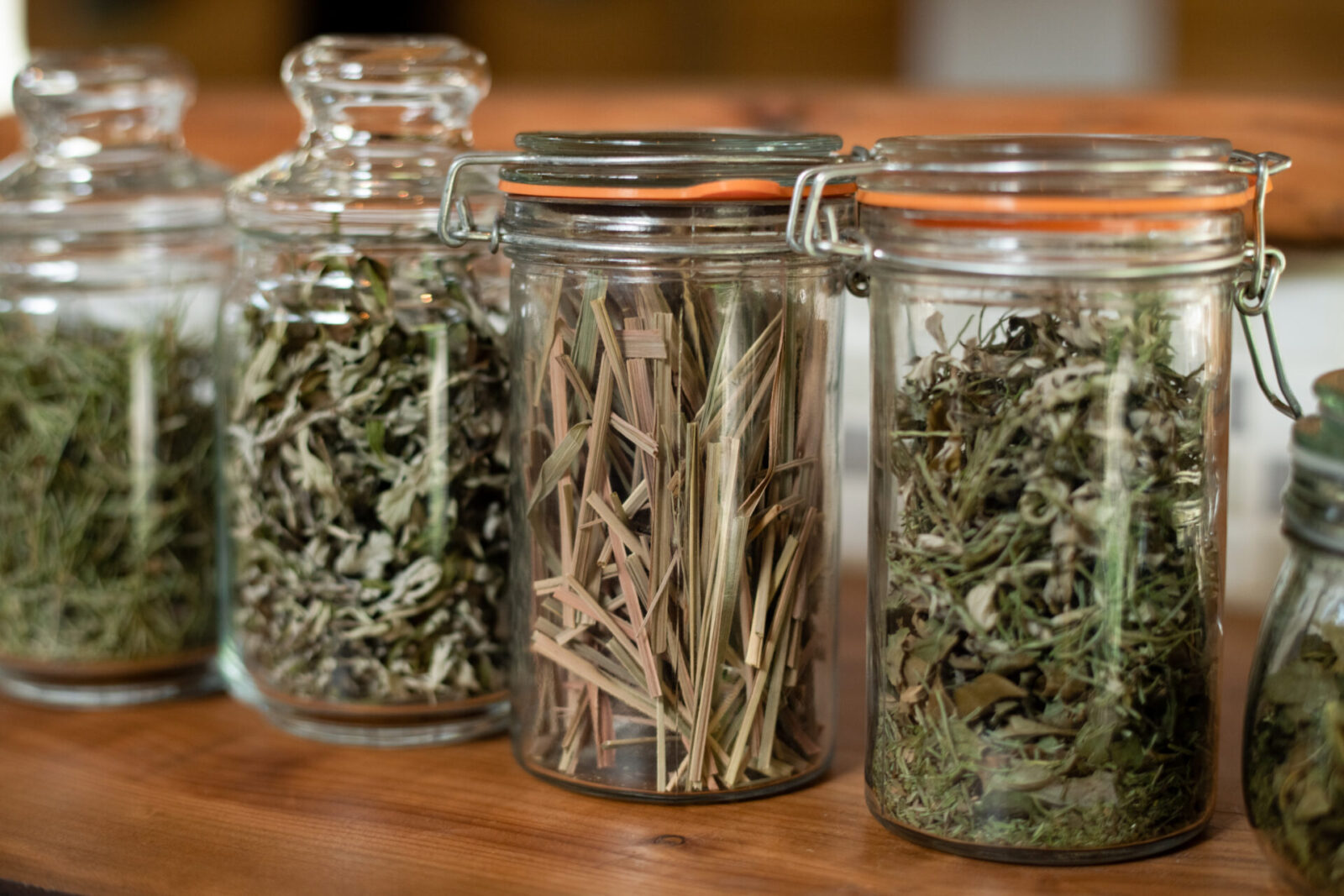
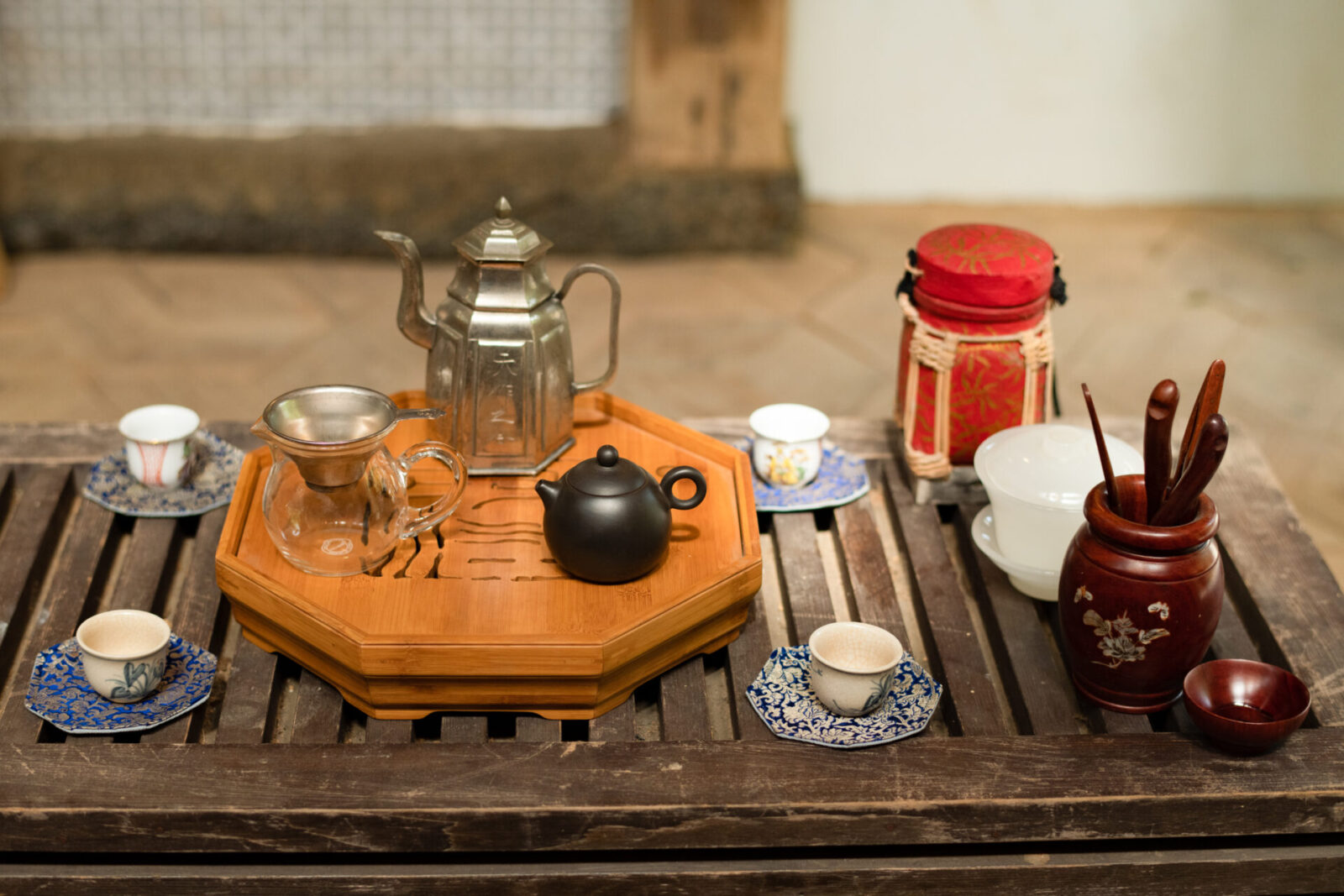
Soon after we started walking we arrived at their vegetable field.
Here they practice natural farming, which does not use fertilizers or pesticides. Some of the vegetables they grow include sakurajima daikon radish, wheat, ginger, wasabi, garlic, potatoes, burdock root, arugula, turnips and snap peas. In this rich natural environment, the vegetables are all growing lush and green.

That day they picked some snap peas. Everyday, they serve freshly picked vegetables in their meals.
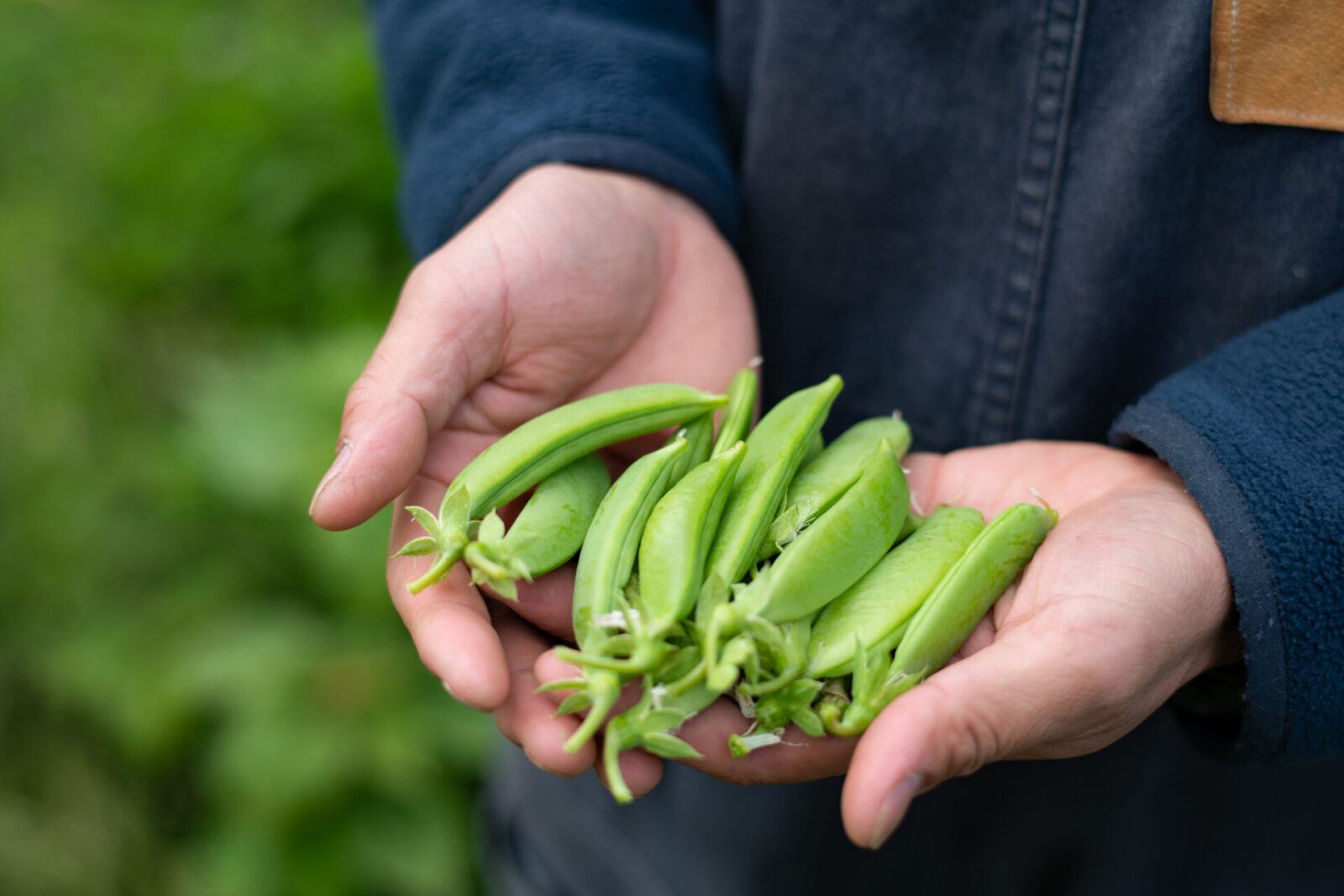
The lotus flower plant growing throughout the garden acts as a “green fertilizer,” which they cut and put into the soil to replenish it. At home they keep bees for honey and the lotus flowers provide nectar for the bees as well.
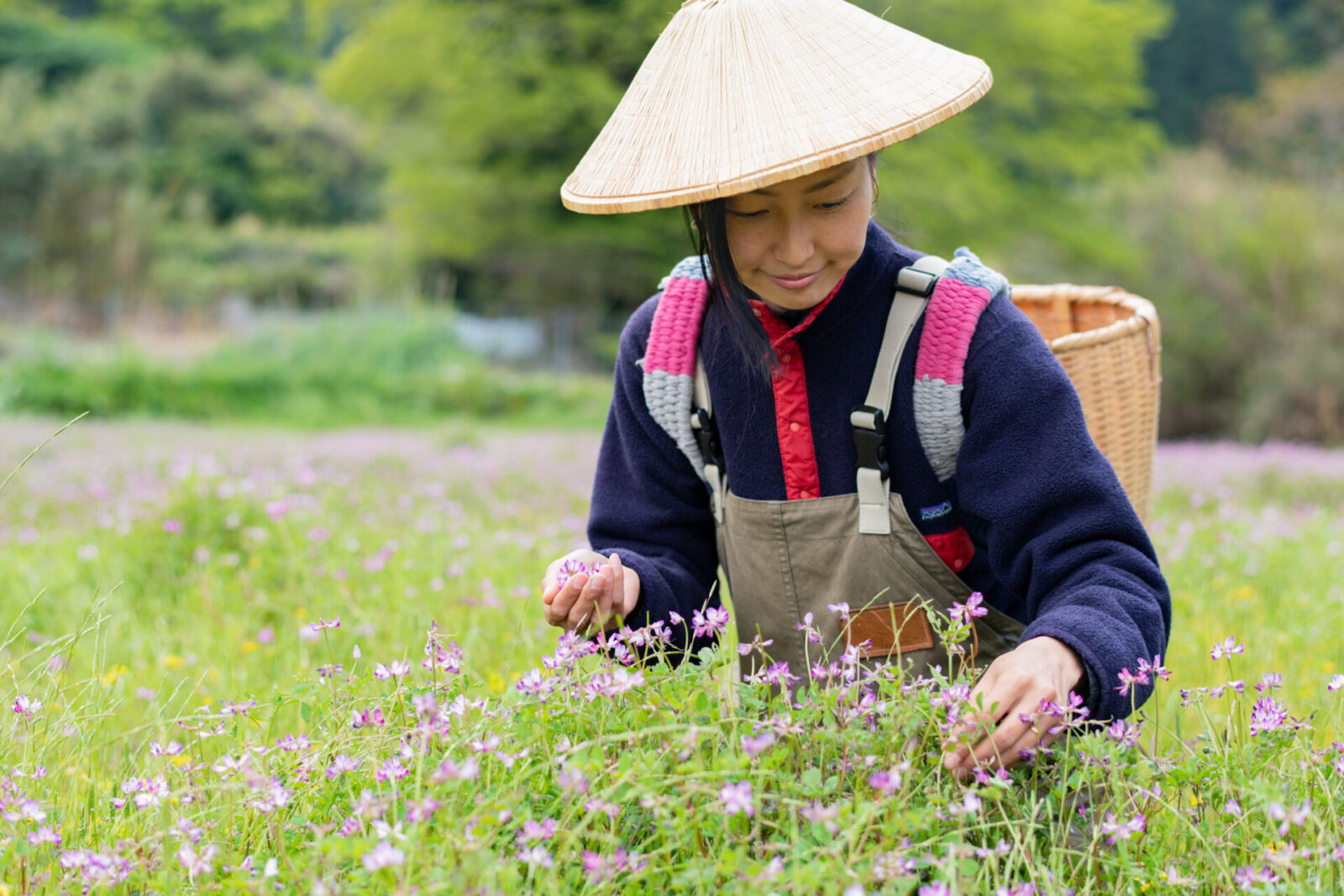
Shida tells us, “Nature acts very efficiently. One act has multiple effects. If it doesn’t work in multiple ways and connects with other things, it does not last. I try to think about how to create maximum results with minimal effort.”
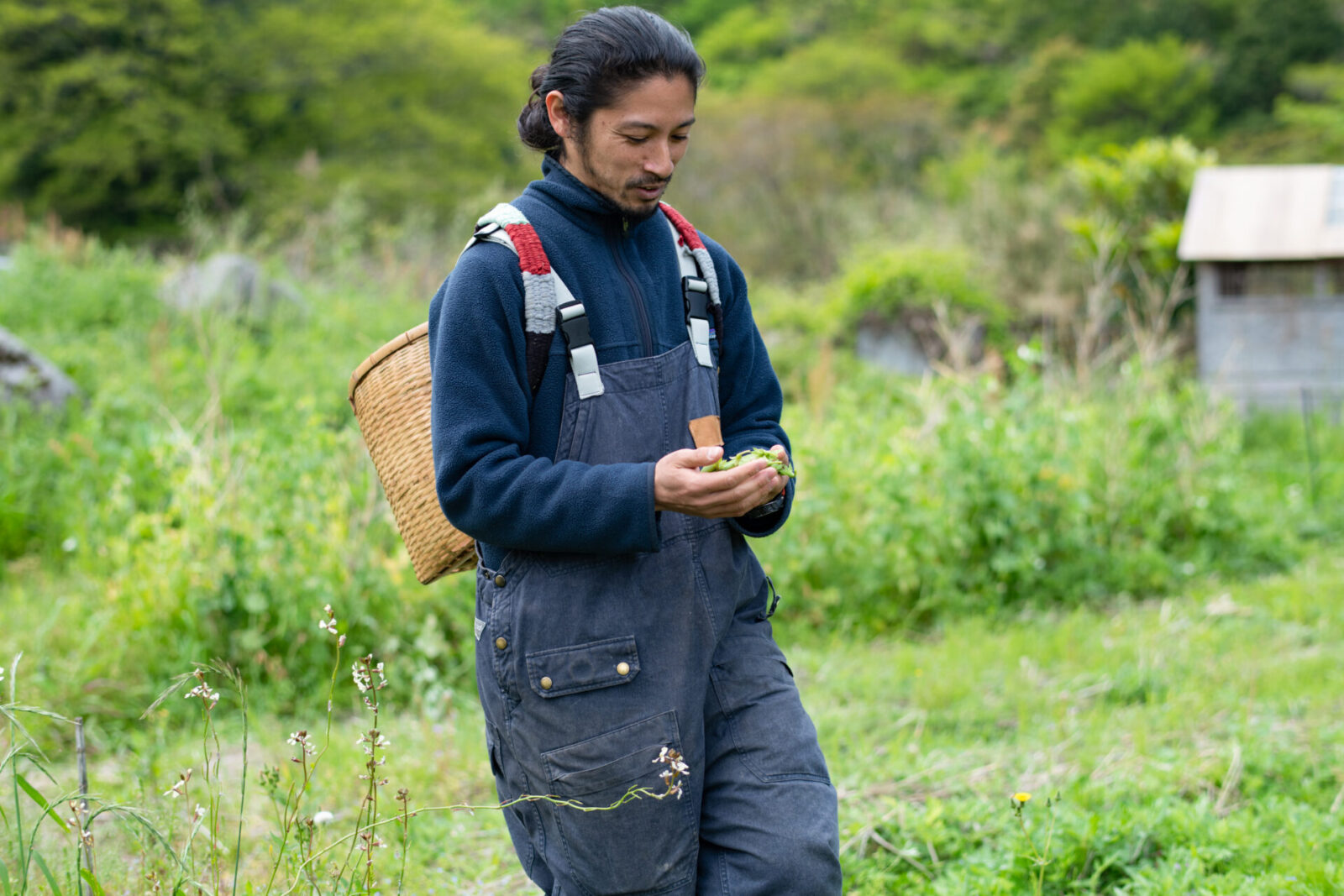
Starting life in Itoshima
Hatakeyama is originally from Saitama. After graduating from a university in Tokyo, she lived in Yokohama and worked for United People, a company that supports and distributes NGO/NPO movies.
So what led her to become the manager of a share house in Itoshima?
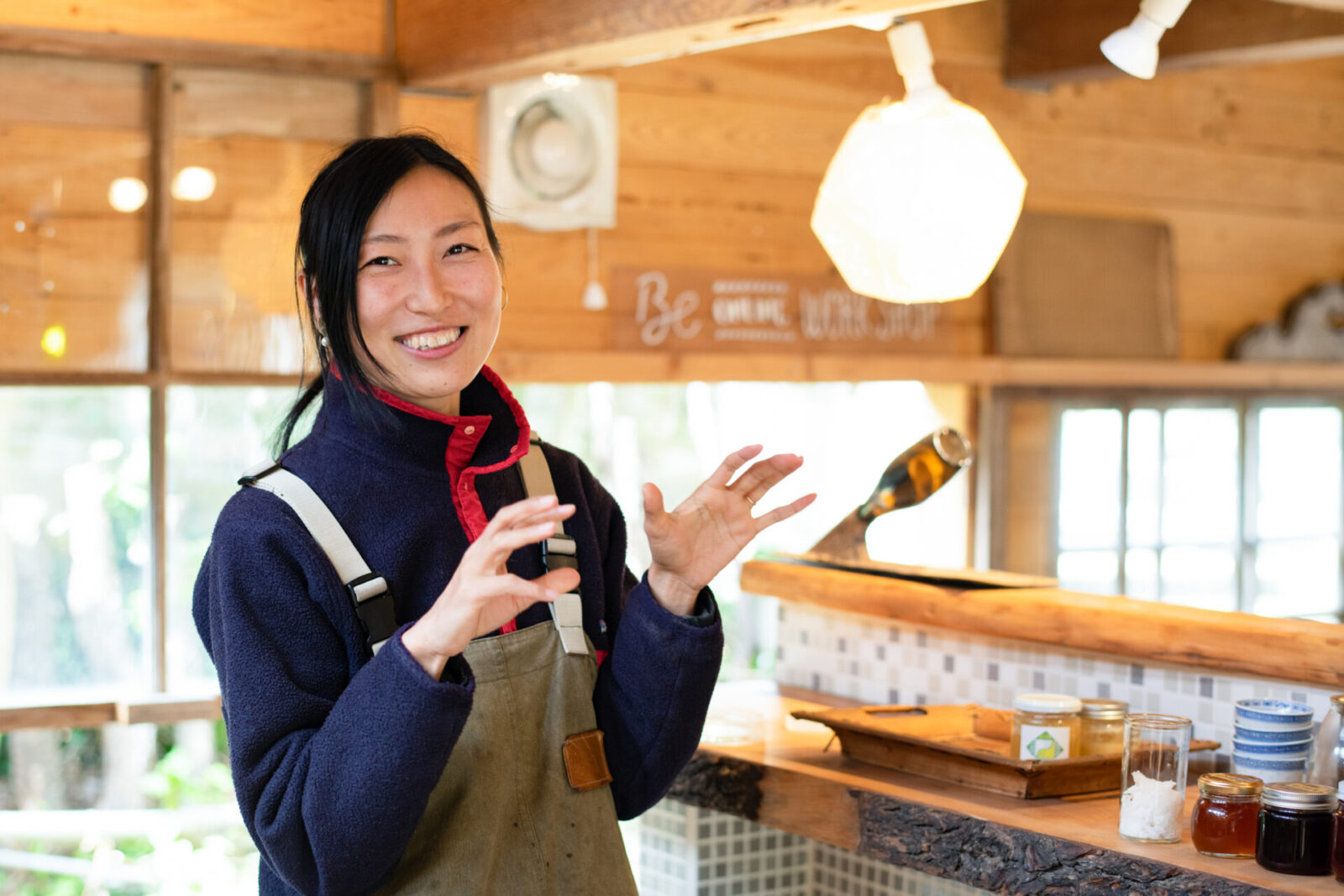
She recalls that her first change came after the Great East Japan Earthquake.
“That experience made me realize that money is no help in times of crisis. Because people started hoarding, all the shops ran out of goods after the earthquake. All the lights were out and the streets became so dark, I was really frightened. We couldn’t ride the trains. I experienced a very sudden change.”
“It made me realize how dependent I was on so many things. We were using electricity made at the Fukushima nuclear power plant without giving it any thought before. There is a high probability that a big earthquake will hit the Tokyo metropolitan area in the future. I began to question whether it was really a good idea to continue living in the city.”
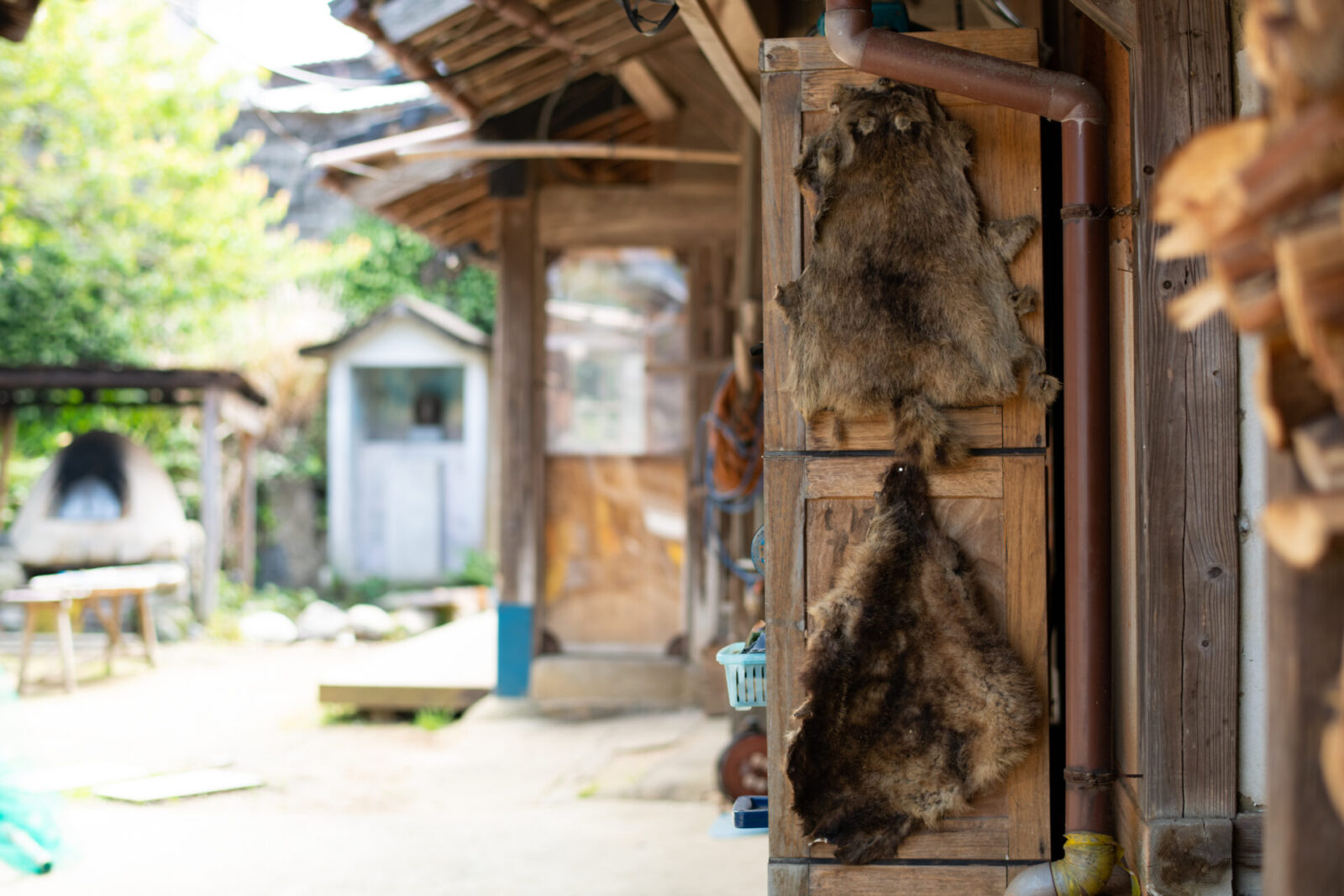
In 2012, the company she worked for moved to Fukuoka and so she decided to move with Shida, whom she was in a relationship with at the time.
They first lived near the city, but after looking around for a place to move by driving around in their car, they came upon a traditional Japanese farmhouse with a sign reading, “Vacant House”.
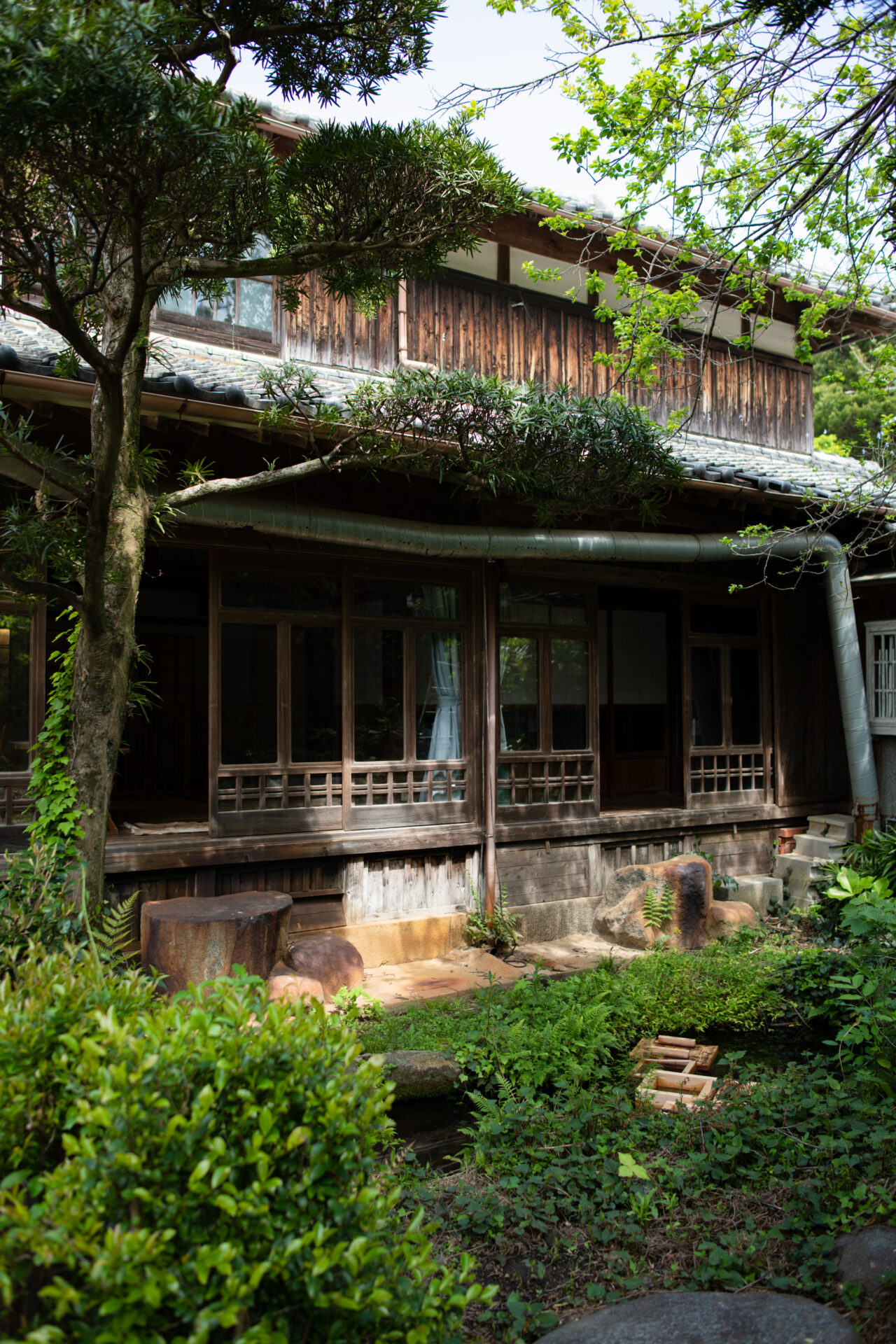
Hatakeyama wanted to live somewhere with terraced rice fields and starry night skies, and Shida wanted to live near the ocean. This property met both of their desires perfectly.
The house was 80 years old and the previous owner was an old woman who lived alone. The house had been vacant for three years and was for sale, but after a year it became available for rent so they looked inside and decided to move in.
In 2013, they began the Itoshima Share House.
“We were able to begin running a share house because we ran into this property. It is a wonderful house that brings a lot of people together. At first it was a bit dark, but as more people moved in it became really bright and beautiful.”
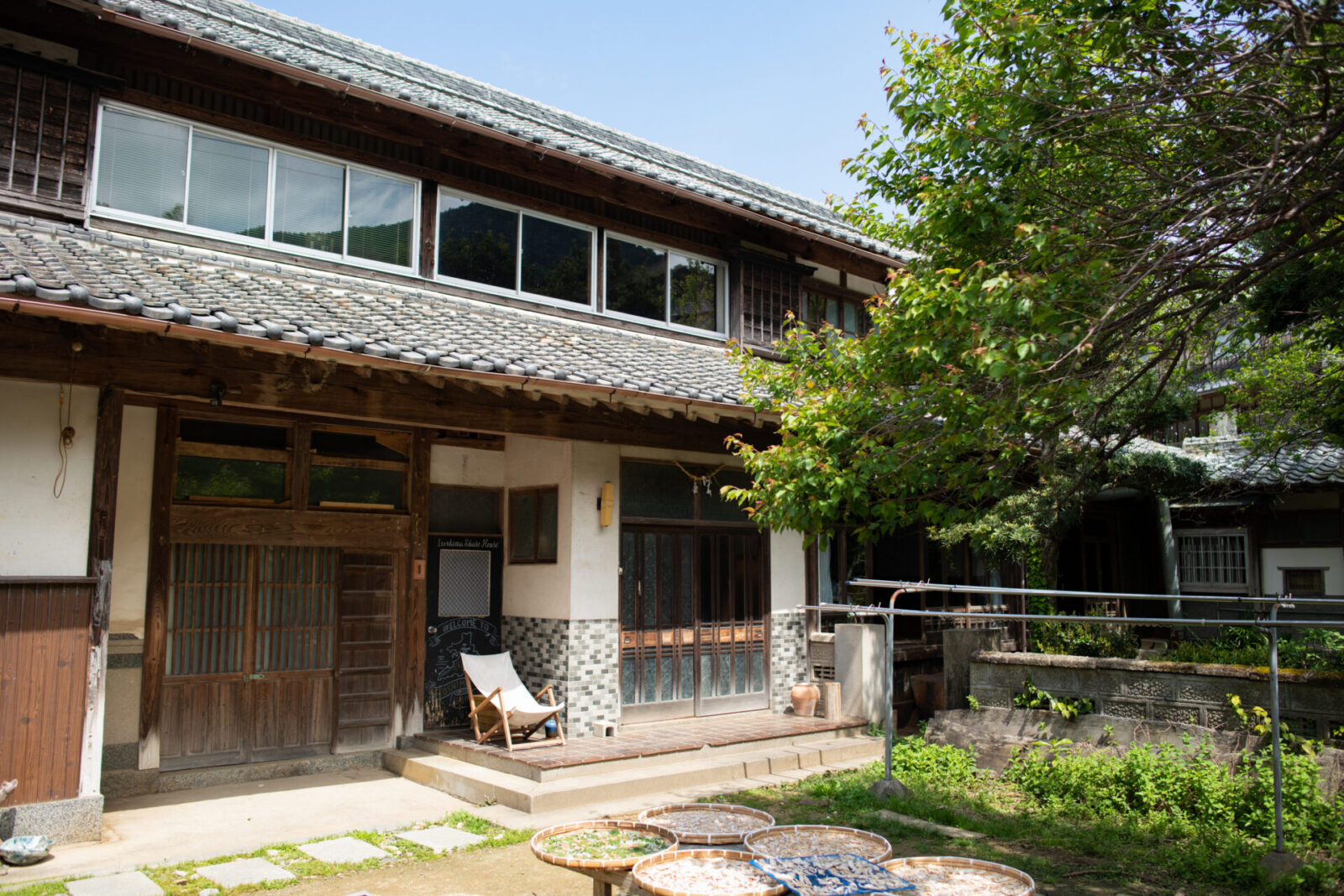
Did they feel any uncertainty about moving to the countryside?
“Definitely. I was very unsure. I was afraid of losing money. Although I was already thinking about quitting my job and becoming freelance, I was having trouble taking the leap. However, as we worked on fixing up the house, I began to believe that we could really create something here. Little by little, I became more confident.”
Being open about mishaps and the process

The barn used to be a dark storage building.
They began a “carpenter-in-residence” project, and offered free accommodation and food in the share house to carpenters. Several carpenters stayed there to work on the large renovation project.

Very quickly, they turned the dark space into a warm cafe-like welcoming space.
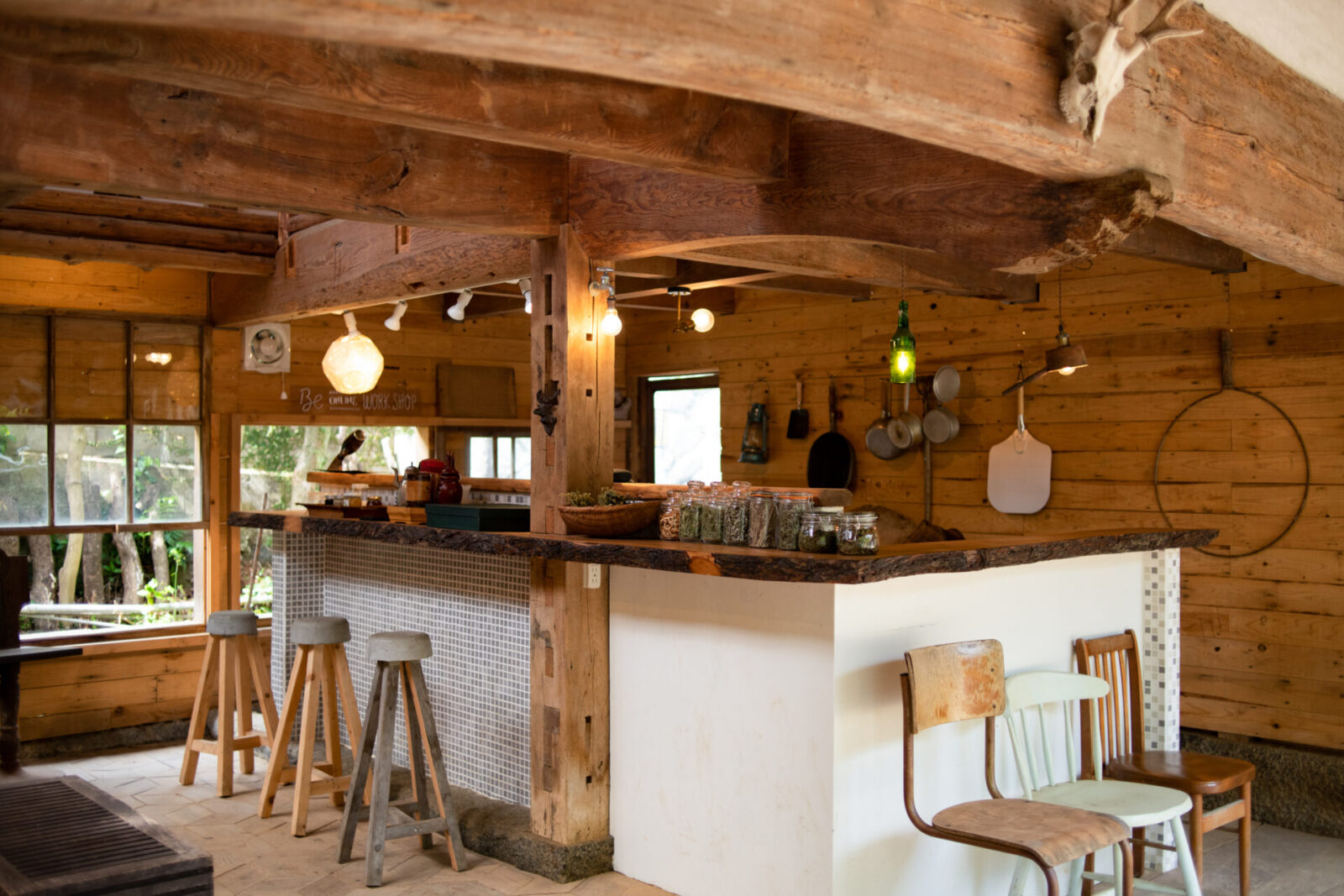
In an environment where they do everything on their own, they organized fun workshops for cleaning and renovating the old house. Local people and professionals also got involved and everyone worked on the project together.
Shida laughs as he says, “I enjoy how you can never really guess what a person will end up becoming.”
“We held workshops to clean up the old house and plaster the dirt walls. We would clean the attic together, then go see the local kabuki shows, and enjoy a lively dinner. A lot of people joined us. We were able to use the income from participation fees to pay for supplies such as lumber and plaster.”
“After the workshops, people would come visit us again to see how things turned out. Initially, the house was pretty run down, but as we opened it up and involved more people, more people became involved long-term.”
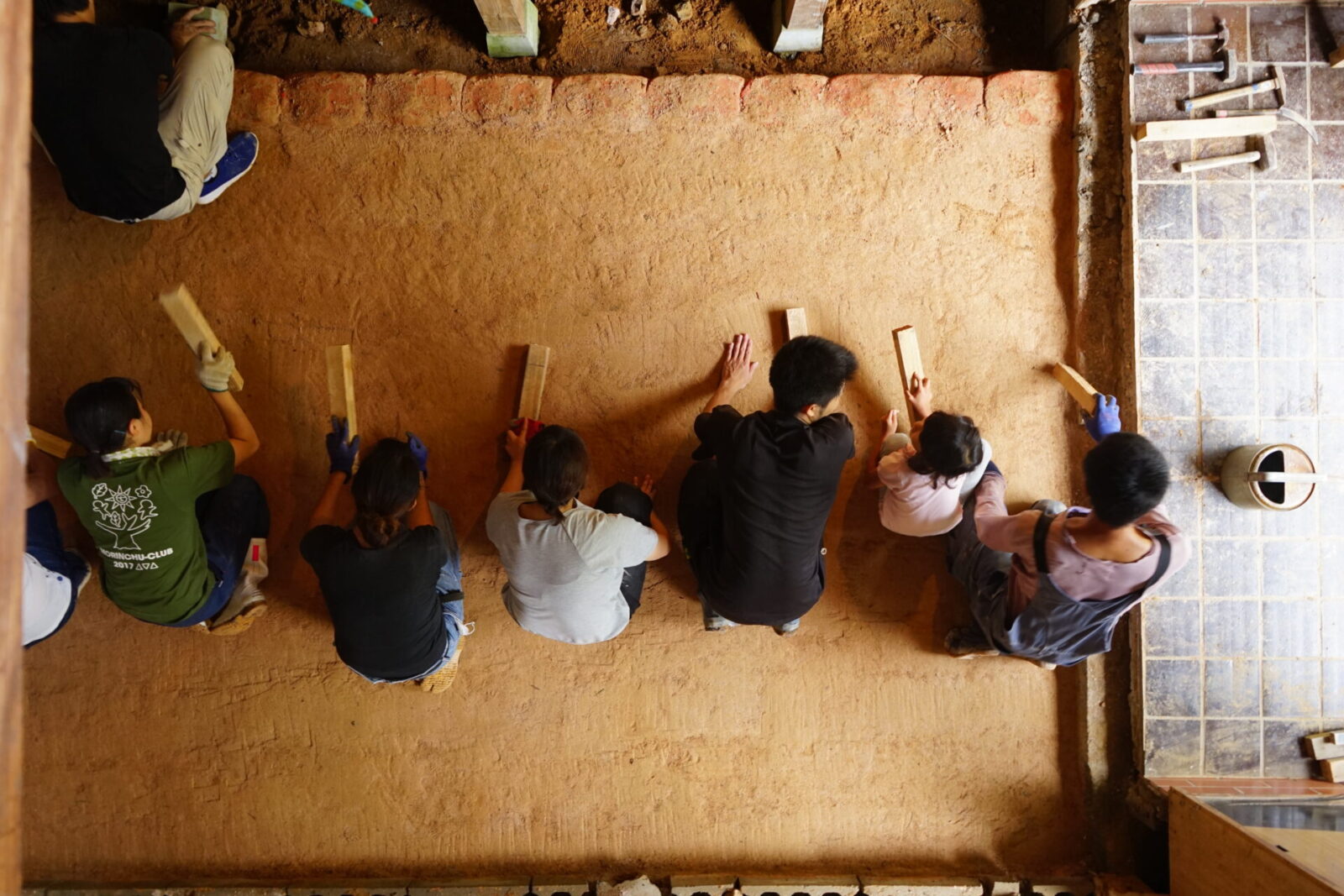
Workshops usually involve professionals who teach you how to do something. However, in their case, they learned alongside the participants as they fixed the house.
In their natural way of living, even mishaps become an asset.
Hayakeyama says, “Mishaps really get your imagination working. We learn that if we did something differently, we wouldn’t be faced with a problem.”
Shida adds, “What we wanted to share with the participants is the process. When you share the final product, you miss out on the process. We wanted to share the experiences of failing as well.”
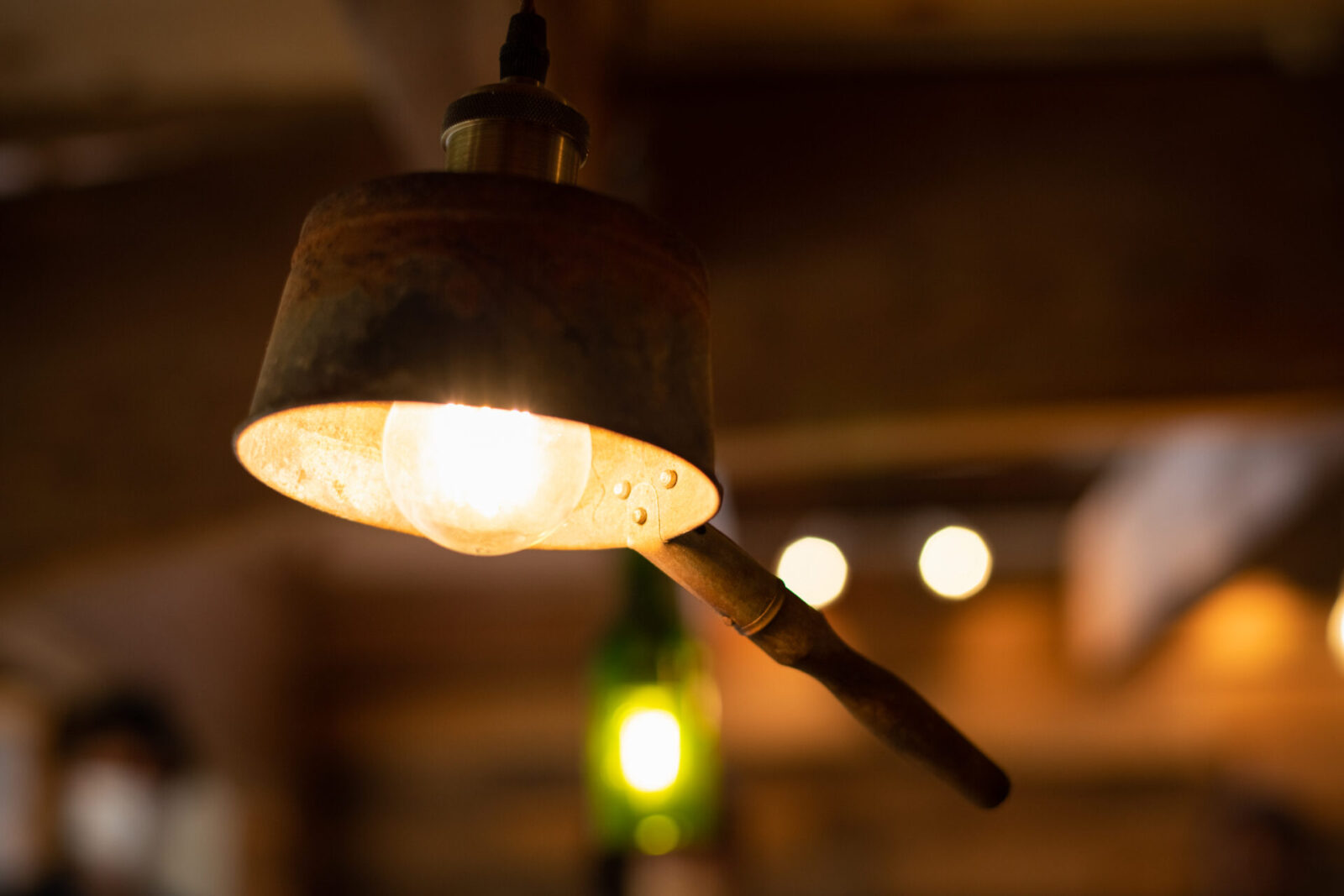
Living with the gifts on nature in “share life”
The relationships among the residents of the share house is like family. Every night they eat dinner together. Once a week, they work in the fields together. They say communication is a vital part of their lives.

They recruit new residents mostly on their website and have lived with people of all different backgrounds.
Residents have included a chiropractor, ballet dancer, musician, kimono dresser, carpenter, French translators, gardener, web designer, pattern maker, etc. They say that working in the country usually requires a special skill so they often get freelancers.
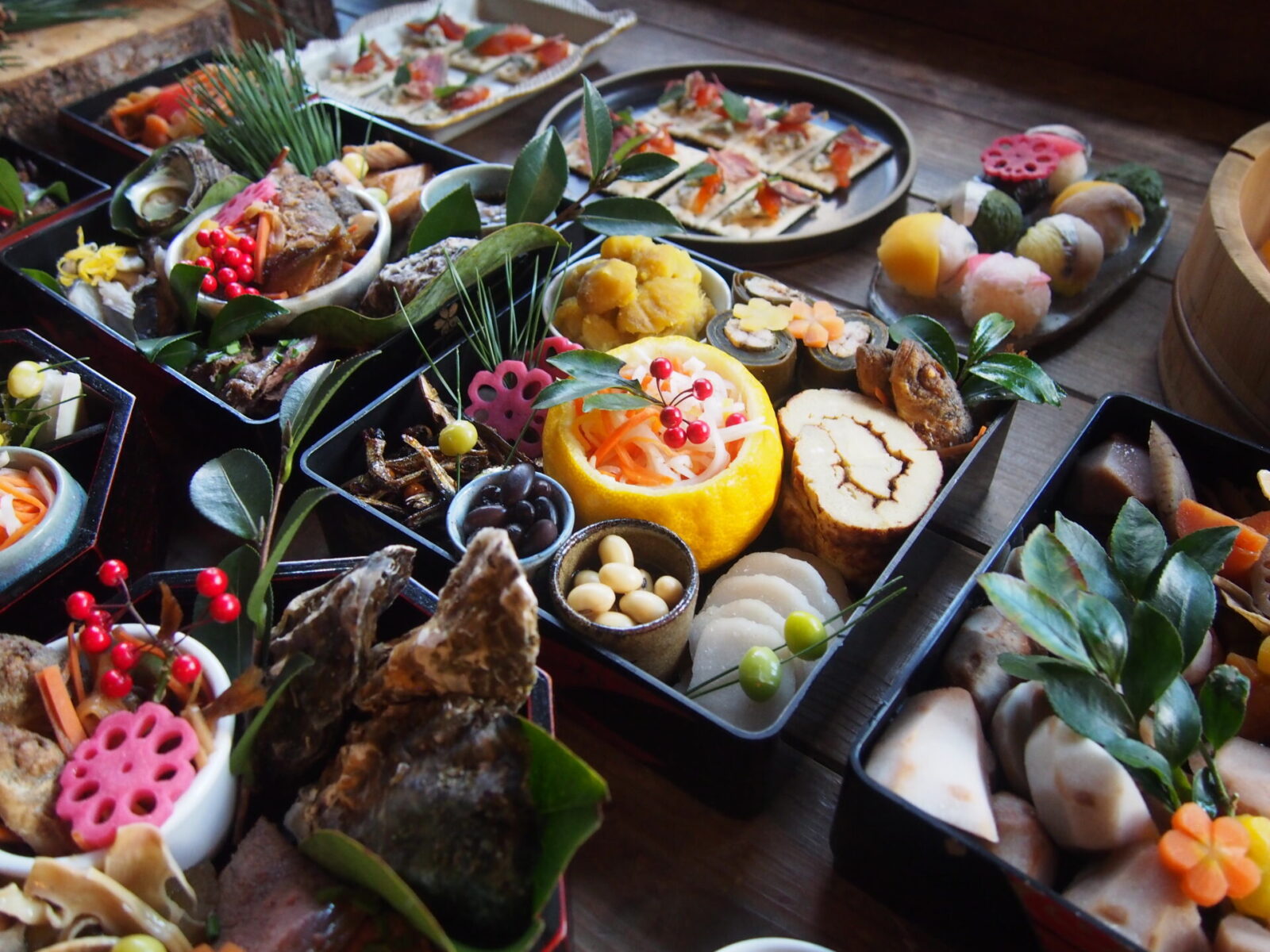
Although they offer some short term residents (under one year), most of their contracts with residents are on a yearly basis.
Shida says this is because one year is the time required to experience one cycle of rice cultivation.
“We eat rice made by the residents of the year before. So if you eat the rice, you should plant, grow, and harvest the rice for the next person. In this way, we connect residents to the next residents.”
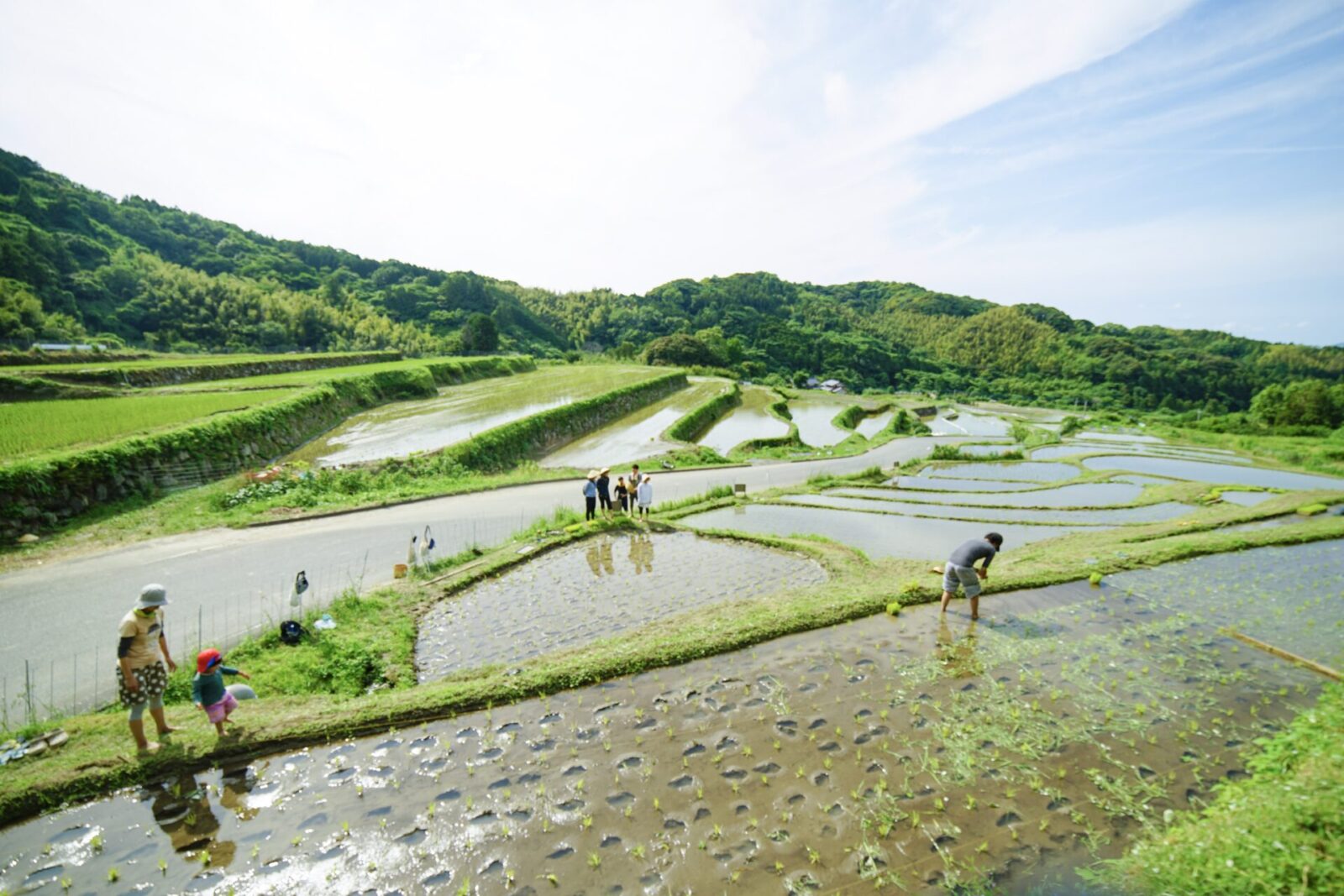
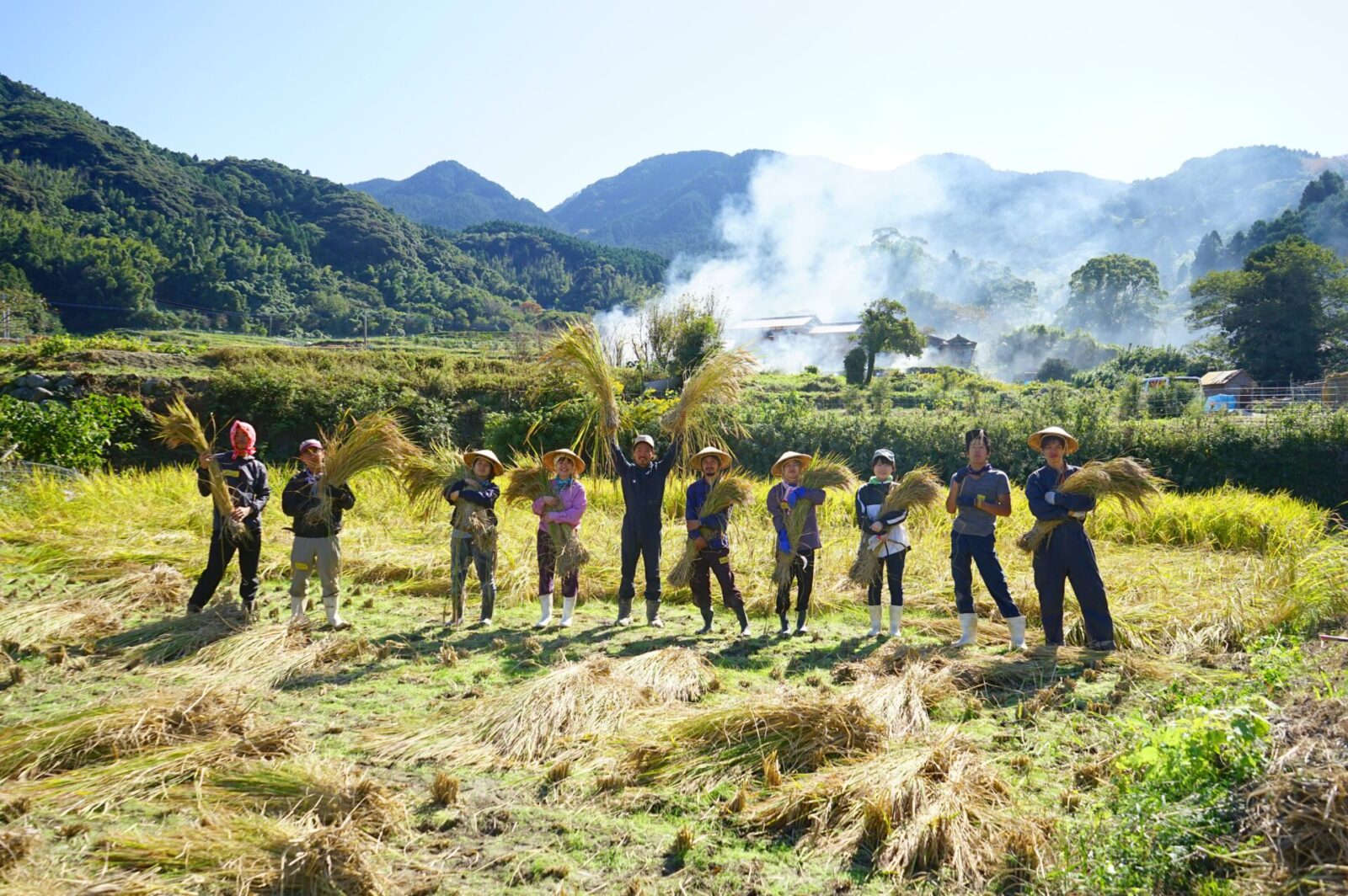
Shida says, “Living in the countryside can be hard work, but when you work with others, those hardships can be turned into fun.”
One windy day, the rice that was being sun dried in the fields were knocked down by the wind. The residents all worked together and spent an hour putting it all back up. Right when they were about to finish and feeling relieved, another sudden burst of wind knocked everything down again.
Hatakeyama recalls, “We all burst out laughing and walked home. We were just like, “Let’s get home and have a drink and go to bed!” I think if we were working alone, or just a couple, we would have felt disheartened, but because we worked in a group we could finish with laughter. Of course, the day after, we went to go fix it again.”
In 2019, the couple had a baby and the share house residents now help babysit. “We want our child to get acquainted with more people, not just their parents. We want them to interact with different people.”
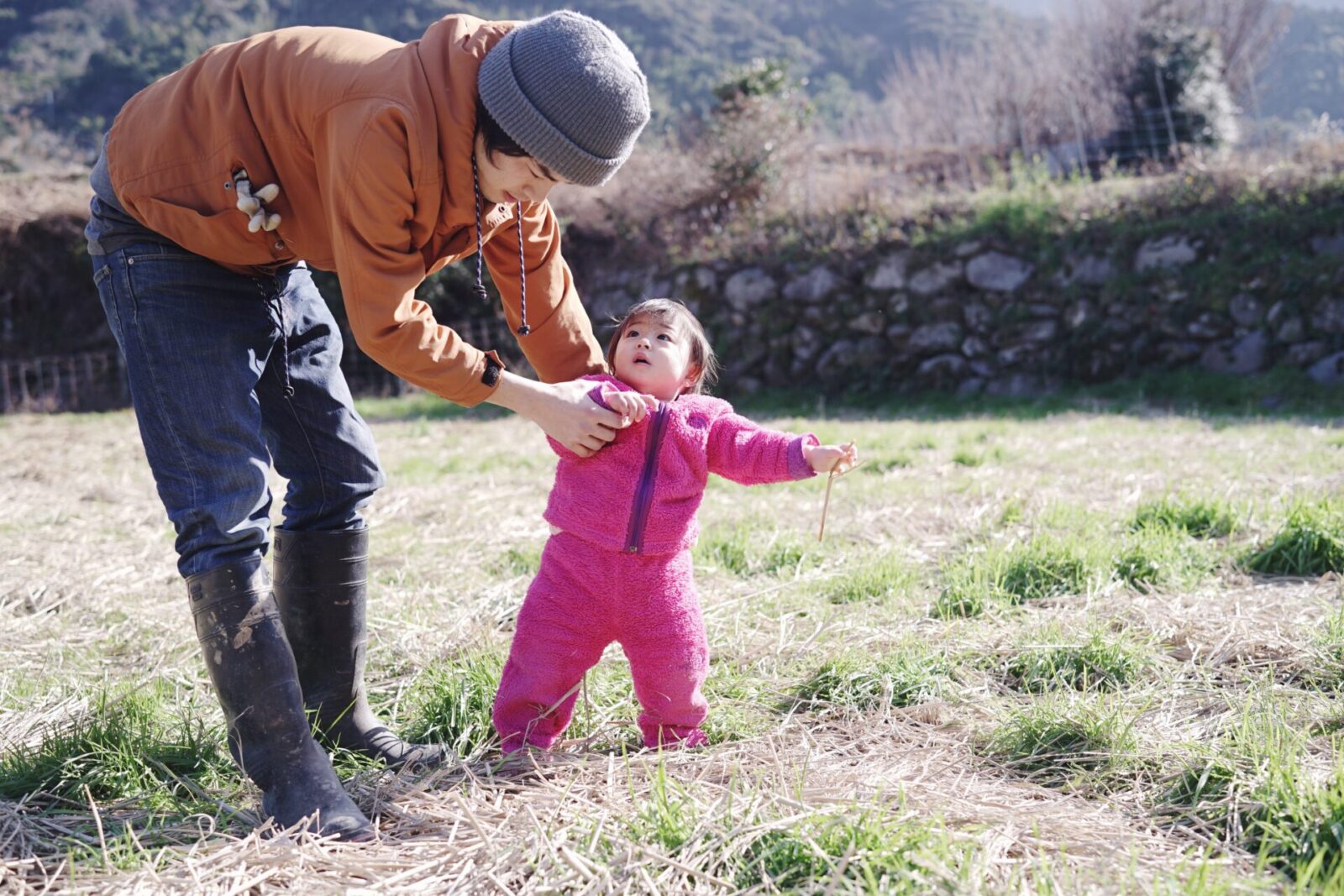
Becoming self sufficient with food, money, and energy
We asked about the cost of living at the Itoshima Share House. They say the cost of food is 6,000 yen a month and utilities is 7,000 yen a month, making it a total of about 15,000 yen per month. They learned that they can get by on very little.
Hatakeyama says, “We store a year’s worth of rice. We have our wood stove and firewood. Our house provides us with shelter from the rain and wind. It’s important to have that sense of security that you know you will be able to get by for some time.”
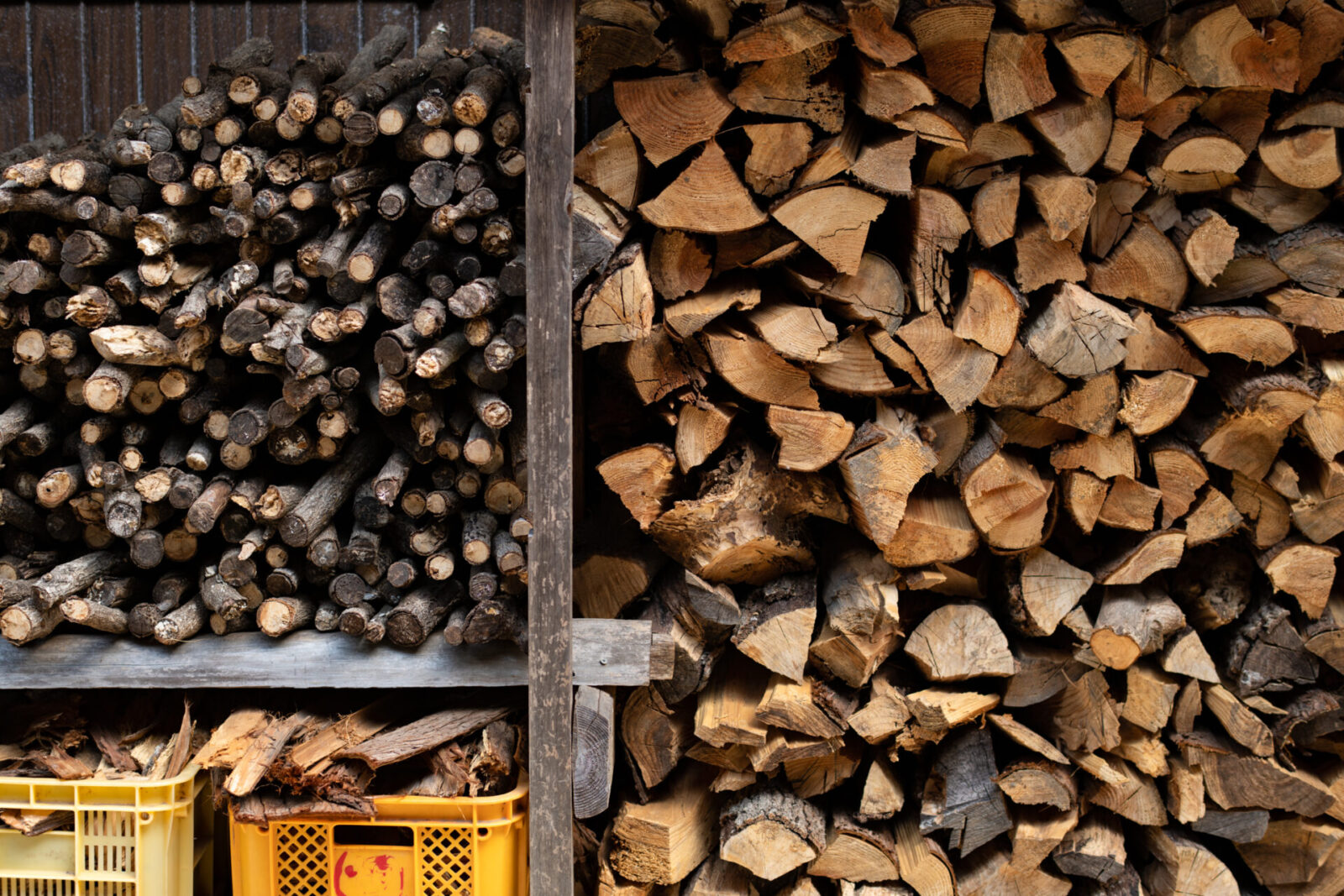

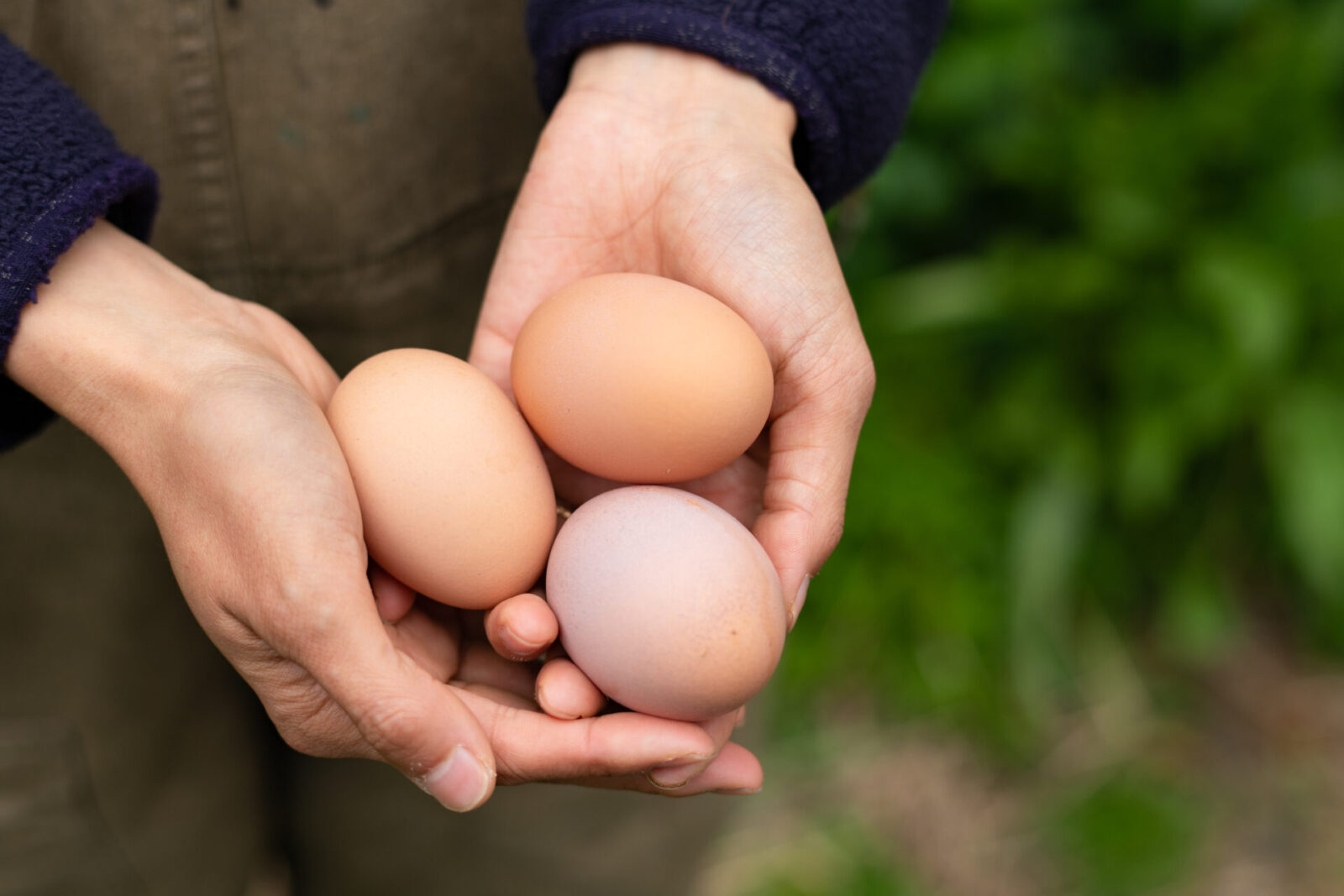

After moving to the countryside, we asked how they immersed themselves into the local community.
“We were pretty persistent in communicating and building relationships with the local community so we built our relationship slowly.”
Shida says, “At first, we really went out of our way to just speak to people and ask when there would be local gatherings and such. When we didn’t get straight forward answers, we would ask for the specific dates and write down the details. Even if we felt like we couldn’t contribute, we would show up and participate.”

After living in Itoshima for 8 years, Hatakeyama thinks back to consumer life in the city.
“I think when you live in the city, many of your decisions are reliant on other people. You cannot survive if somebody doesn’t sell you things so you have to be a consumer. This means that you must have money. If you don’t have a lot, you buy cheaper options, which includes products which may have been made through exploited cheap labor. The whole system is a vicious cycle.”
“I think choosing to buy products that are better for the environment, or things that make you feel good about using them is the most direct way that you can change society. We would like to create a healthy cycle of using money that feels right.”
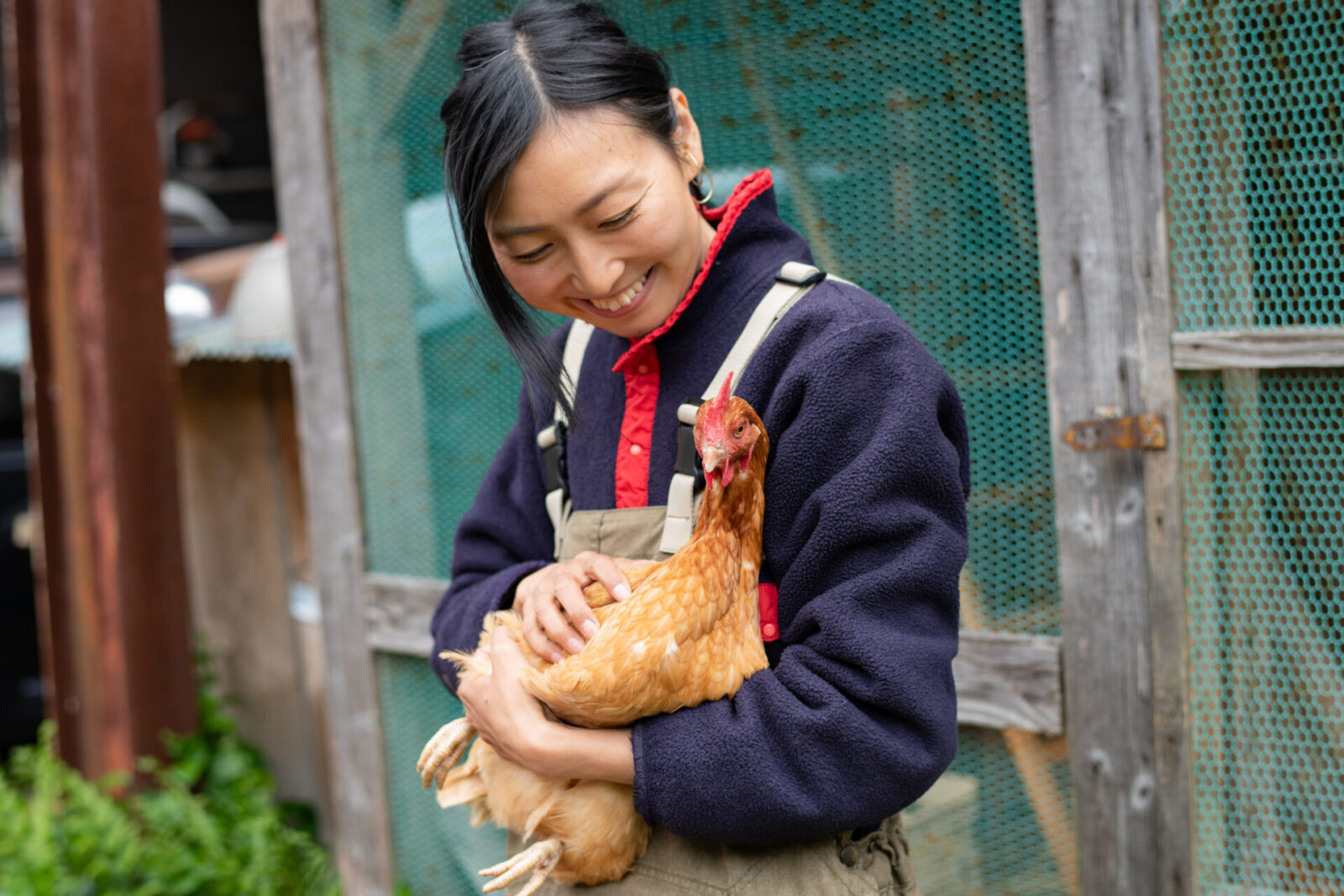
The lifestyle in Itoshima is their way of raising questions about the current consumer lifestyle, and an experiment for a better solution.
Hatakeyama smiles as she says, “Still, the reason I have been able to continue this lifestyle for 8 years is simply because I enjoy it so much.”
“Be” the change you wish to lifestyle make
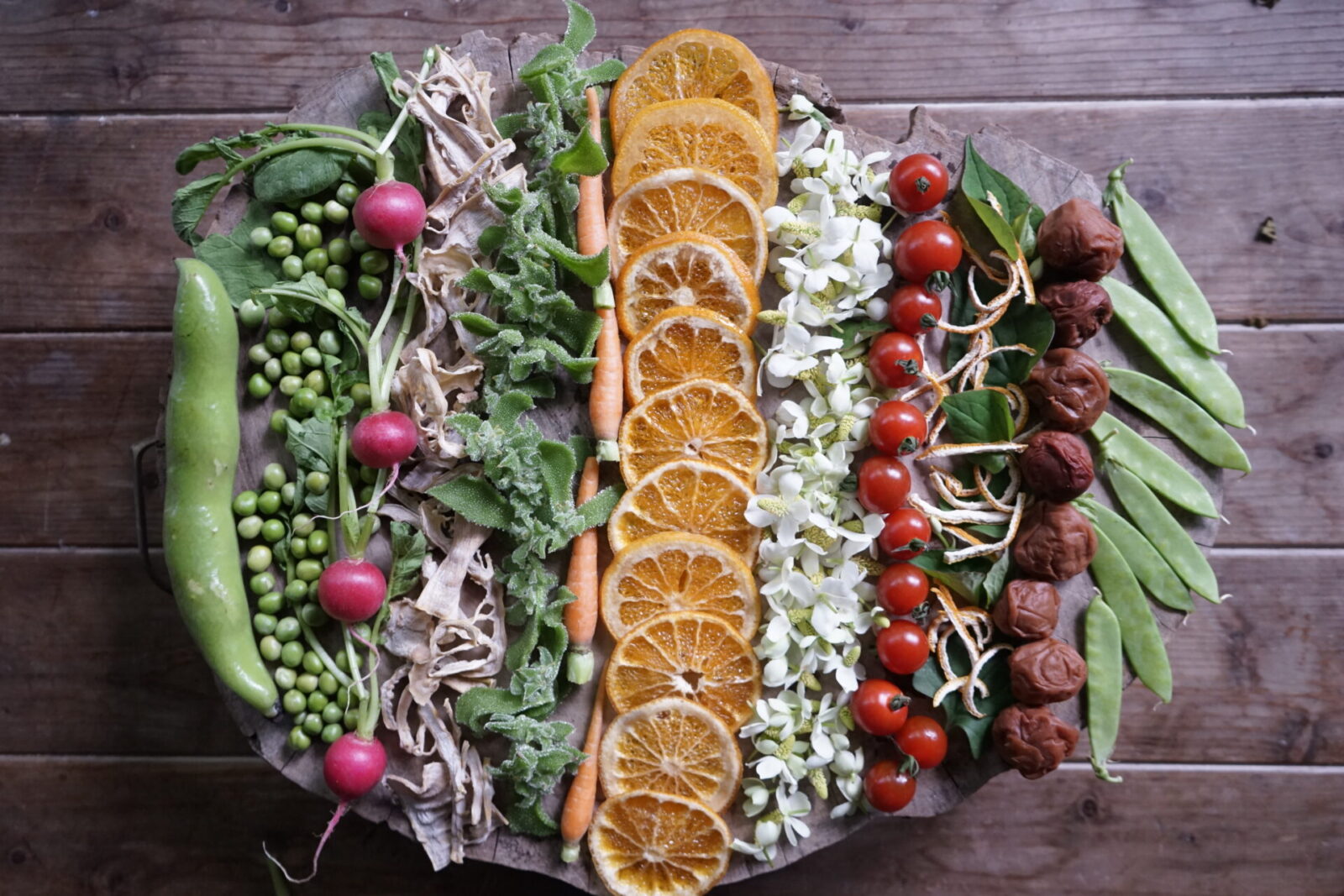
In 2020, they began a new service of sending out regular packages called Be, which are DIY lifestyle kits. These kits are sent three times a month, with different themes, including Handmade Life Kit, Kitchen Sprout Garden Kit, and Sharing of Life Kit.
They started the Be project during the coronavirus pandemic.

Hatakeyama says, “Our workshops always involved people from the cities coming to the countryside. However, because of the pandemic and the fact that much of the countryside population are elderly, we cannot invite large groups of people from the city like before. So instead, we decided to deliver country life to the people in the cities though kits that provide our lifestyle experiences”
Past kits have included: making salt from seawater, making homemade miso, making wrapping paper from beeswax, and more. The kits provide tools to incorporate handmade products into your life. They also interview professionals such as miso producers and include articles for consumers to read in the kits.
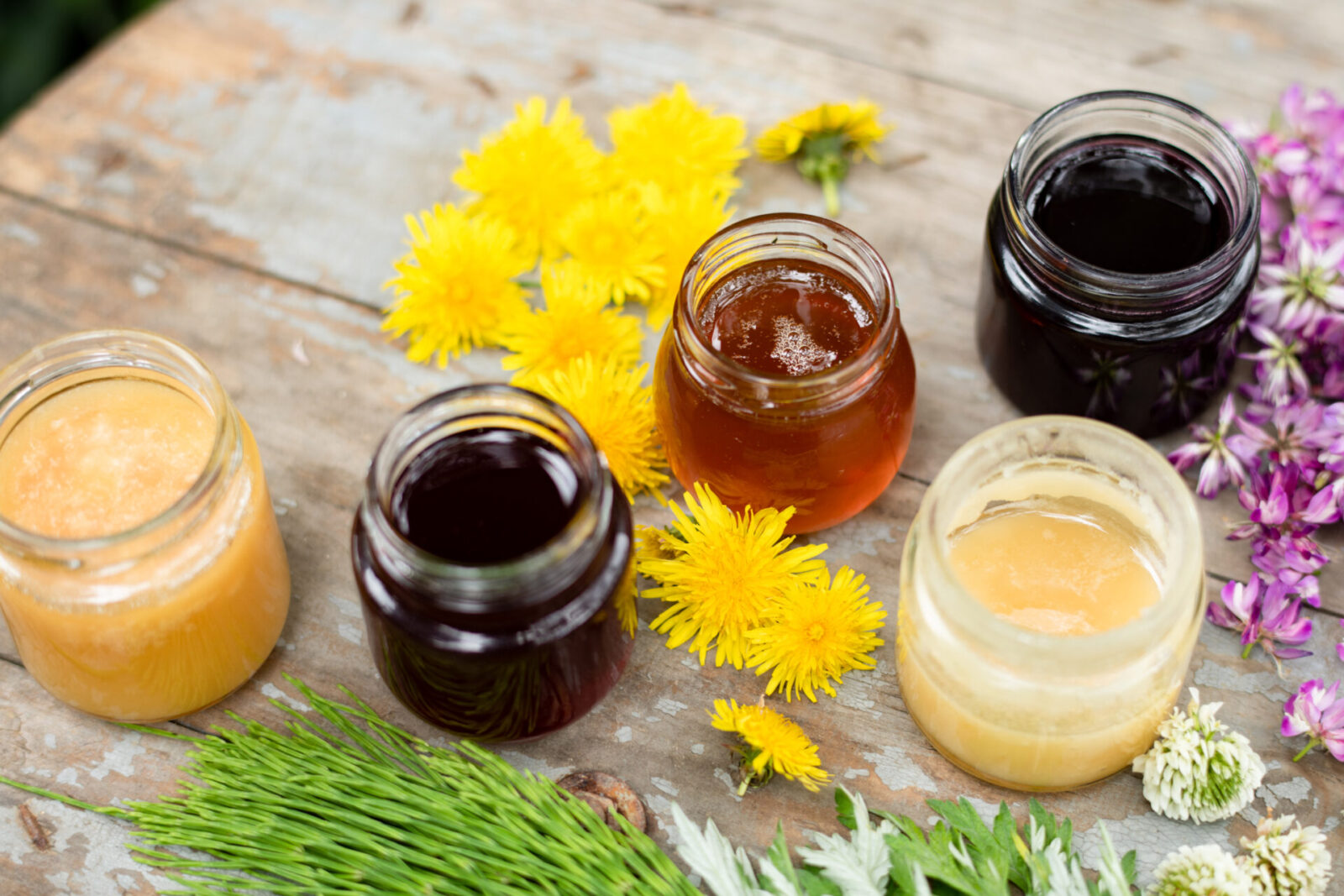
Hatakeyama says, “Each kit is trial and error as I come up with new ideas.”
“With our seawater making kit, we found that regular seawater has very little salt concentration so it made very little salt. We built a big fire in our kiln and boiled down the seawater to make it a higher concentration before we sent it out to our customers so when they boiled it at home it created salt crystals quickly.”
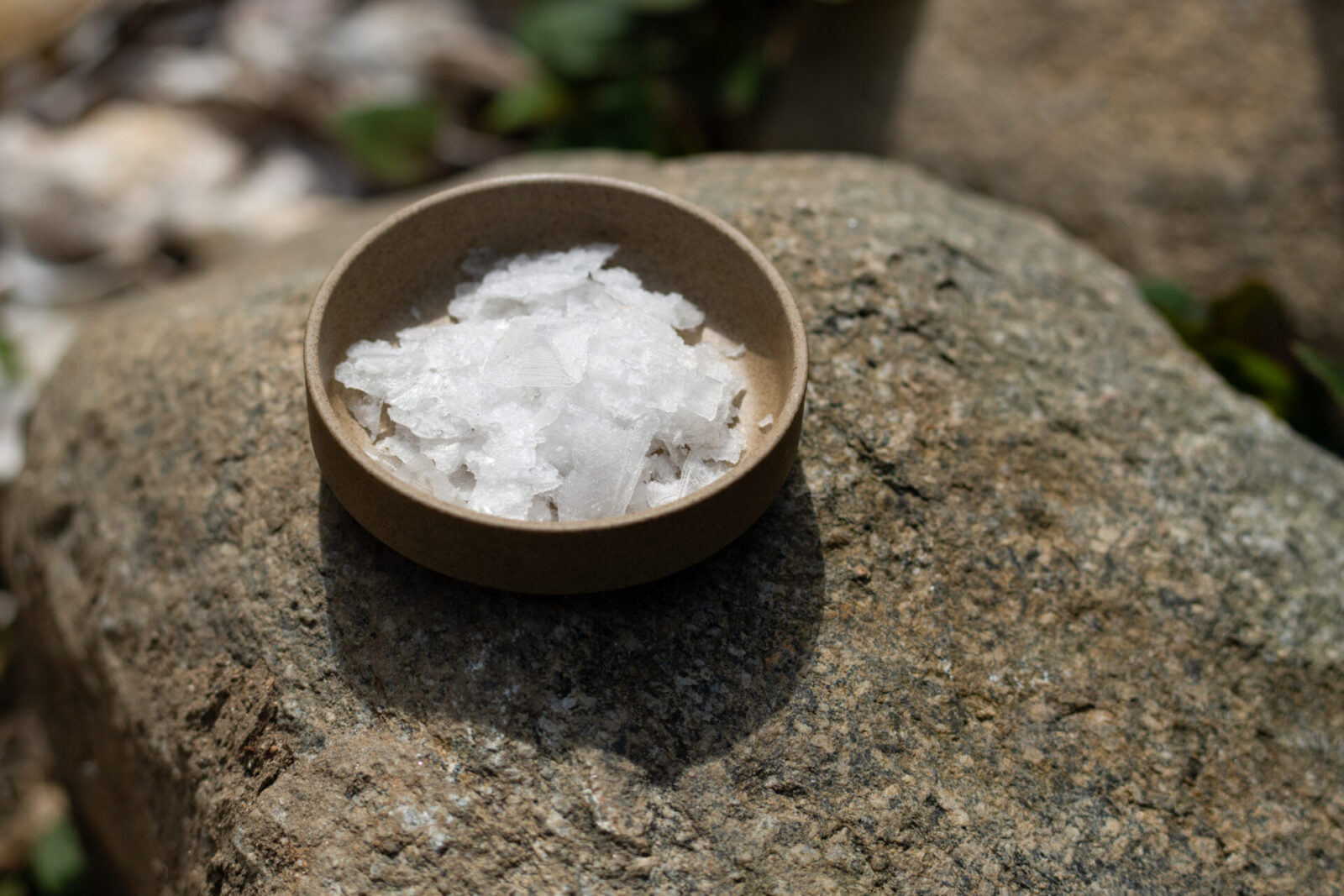
“Without experimenting with materials and processes, it’s not possible to recreate it in the cities. People in the cities are pressed for time, so if it can’t be done quickly, they won’t continue doing it. We try to make it possible to do things in the shortest time possible. For example, we pre-measure ingredients before we send it so all they have to do is mix it together.”
They also create online videos to show this process. They hold live events on Instagram so everyone can work together and they can answer questions as they go. The videos are archived for those who cannot participate live.
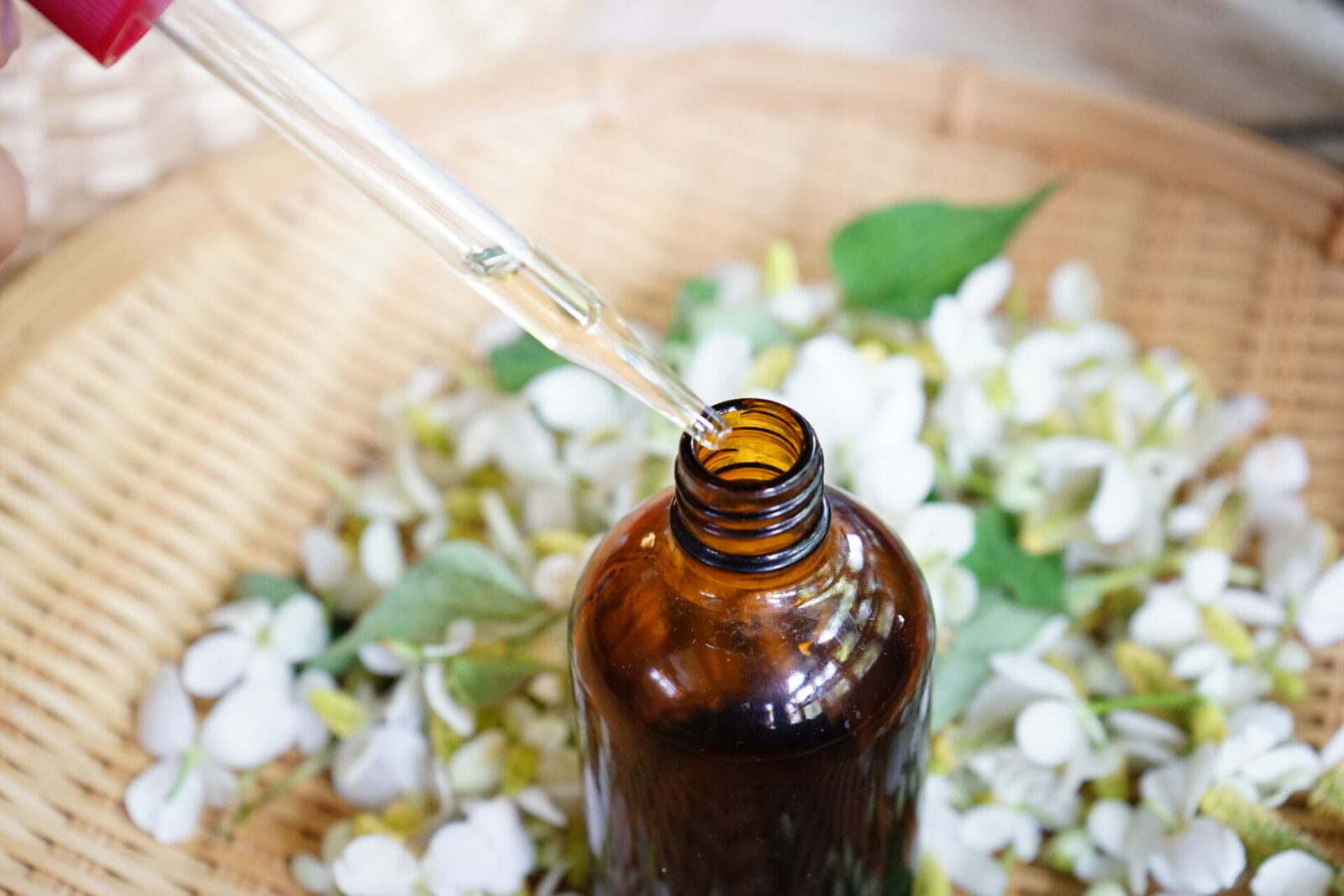
We asked Hatakeyama the meaning behind Be.
“There is a famous saying from Gandhi that says ‘you must be the change you wish to see in the world.’ When you make something yourself, you see the process behind how things are made. I wanted to create a movement where more people become a part of the process and make things themselves.”

Letting go of the city life, where one races with time, and experimenting with how to create each aspect of our daily lives, the self-sufficient lifestyle was full of moments that melt time.
We found numerous hints on how we may live in the future incorporated into the everyday life at Itoshima Share House.
Photo: Yuko Kawashima
Translation: Sophia Swanson
Born in 1990, Nagasaki. Freelance writer. Interviews and writes about book authors and other cultural figures. Recent hobby is to watch capybara videos on the Internet.
Editor and creator of the future through words. Former associate editor of Huffington Post Japan. Became independent after working for a publishing company and overseas news media. Assists in communications for corporates and various projects. Born in Gifu, loves cats.
